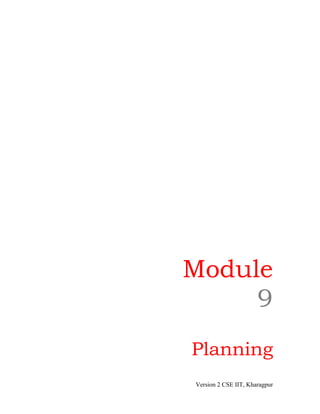This document discusses two main approaches to solving planning problems: situation-space search and planning-space search. It focuses on situation-space planning, describing progression planning and regression planning. Progression planning searches forward from the initial state to the goal state, while regression planning searches backward from the goal state to the initial state. Algorithms for both progression and regression planning in situation space are presented. The document also discusses goal interaction and the principle of least commitment in planning.






